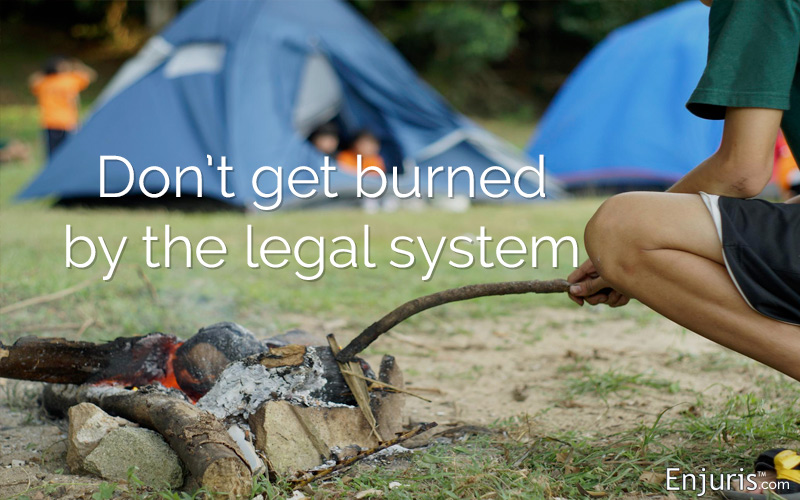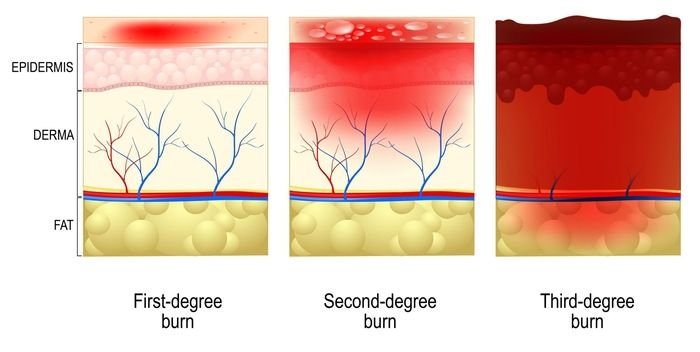
A personal injury lawyer can help you recover costs from your serious burn injury
Big Sky Country is beautiful, without a doubt, and it’s also home to an estimated 25% of the nation’s recoverable coal reserves. The industry has also seen more than a 3 million ton upturn in recent years. While this might be beneficial for Montana’s economy, it also means that more workers are in the coal industry and are exposed to a unique set of risks in the workplace.
Coal mining and the oil industry aren’t the only dangerous profession, but they do have a higher risk of burns and fire-related injuries. Likewise, burn injuries can happen to anyone in Montana, not just those who work in the mining industry.
Here’s what you need to know if you or someone you love has been severely burned in a Montana accident:
Common causes of burn injuries
Accidental fires are one cause of burn injuries. Other causes include:
- Contact with scalding liquids or steam
- Contact with a hot object
- Contact with chemicals
- Electrocution
- Radiation
Types of burn injuries
A burn could be minor and heal on its own within a few days, or it could be severe and require intensive pain management treatment for a long period of time. Most of us have been burned once or twice in our lives—taking cookies out of the oven, touching a hot surface, or even a bad sunburn.
All burn injuries are broken into these 3 categories:
- 1st degree burns. These burns are the mildest and don’t require treatment. They are characterized by some pain, discomfort and reddening of the outer layer of the skin (epidermis). Often, you can use an over-the-counter topical burn remedy available at your local pharmacy or grocery store to soothe the pain and the burn will heal itself in a few days. Sunburn, for example, is a 1st degree burn.
- 2nd degree burns. A 2nd degree burn affects the epidermis and the dermis, or the outer and lower layers of skin. This can include pain, redness, swelling, and blistering.
- 3rd degree burns. This is the most serious type of burn, and it affects deeper tissues than the skin. It can result in white or black charred skin that could be numb or painful and permanently destroys tissue. A 3rd degree burn may lead to permanent disfigurement.

When does a burn lead to a personal injury lawsuit?
If you were burned while cooking, from sparks at your campfire or some other accident, it could be just that—an accident with no one to blame but yourself, the wind or some other uncontrollable factor.
But some fires and burns are preventable, and if you were burned because of a defective product or lack of safety precautions in a public place, for example, you might be able to recover costs for your medical treatment and other damages.
Common examples of fire and burn injury lawsuits:
- Apartment building fires
- Workplace injuries
- Electrical accidents and electrical cord fires
- Scalding water or pipes
- Fires in public places (hotels, restaurants, stores, nightclubs, dormitories, etc.)
- Truck accidents and explosions
- Car accidents
- Defective products
- Locked fire exits
Land owner responsibility to prevent fires
If you rent an apartment or house in Montana, your landlord is responsible for ensuring that the property is fully equipped with smoke detectors and fire alarms.
| Montana Landlord Tenant Law: Smoke Detectors and carbon monoxide detectors [§70-24-303(1)(h)] |
|---|
| Every Montana landlord is required to install and verify that carbon monoxide detectors and smoke detectors in the unit are in good working order when the tenant moves in. It’s the tenant’s responsibility to check that the detectors remain in good working order during the time they live there. |
Premises liability
If there was a fire in your rental home that resulted in burn injuries to you or your family, a personal injury lawyer can advise whether your landlord met their legal obligation. Montana law protects a landlord against liability for a defective smoke alarm if the landlord correctly installed and tested it when you moved in.
Premises liability means that as a tenant, your lease guarantees you the right to expect a certain level of safety and security. This includes not just fires, but slip and fall injuries and other situations where you might’ve been hurt by conditions on the property. Premises liability doesn’t just apply to a rental apartment or house.
The owner of a public place like a restaurant, hotel, stadium, grocery store, gym, public transportation, or other location also has a responsibility to keep patrons safe. That means meeting fire code regulations that include properly marked exits, maintaining capacity, using fire-retardant building materials, and having working sprinkler systems and smoke detectors.
| The Station nightclub fire, Rhode Island (2003) |
|---|
| In 2003, tragedy struck when a huge fire engulfed The Station nightclub in Rhode Island. The fire started during a rock concert. One hundred people were killed and more than 200 were injured. It was later determined that the property didn’t have a required fire sprinkler system. The fire was the result of pyrotechnics used by the band that ignited acoustic foam in the building. The building also had more people present at the concert than fire code capacity allowed.
More than $115 million in civil settlements was paid to survivors and the families of the deceased. |
Burn injury from a defective product
There’s a wide range of products that could cause burns because of manufacturing defects.
Almost any electrical appliance has that potential — simply by its nature, anything you plug into an electrical socket could be dangerous. A frayed or broken electrical cord can cause a burn injury. However, it doesn’t mean that there was a defect. If the item was manufactured and designed correctly, a fray could simply be the result of years of use.
But what about items that aren’t electrical, but are flammable?
Some clothes, housewares, pillows, furniture, and other items are required by law to contain flame-retardant. That means they must be treated with certain chemicals that prevent the items from catching fire too easily.
Defective product lawsuits
There are 3 types of lawsuits that can be filed for a defective product that results in a burn injury:
- Design defect: When a product was made correctly according to its specifications but the design makes it inherently dangerous.
- Failure to warn: A product might be safe only when used in certain ways. The product’s warning labels and instructions must adequately warn the user of its risks.
- Manufacturing defect: A defect might happen during the manufacturing or shipping process. It could be a missing or broken part, incorrect assembly, or other issue that causes the product to malfunction.
A defective product could cause a burn injury if it heats up too fast or too much (or without warning), if it has an electrical malfunction, if it could start a fire some other way (like with friction), or if it’s more flammable than the instructions specify.
Burn injuries in the workplace
We’ve talked about the coal mines and burn injuries that can happen because of explosions and conditions in the mines that are ripe for fires and burns to occur.
But burn injuries happen on other kinds of worksites, too. Construction sites often involve risk of electrocution, or burns that can happen from welding accidents or sparks that ignite other chemicals or substances.
You need to be careful in any workplace. If you do suffer a burn injury at work, you must file a workers’ compensation claim. Workers’ compensation insurance in Montana covers your costs for medical treatment, therapies, assistive devices, and lost wages.
Car accident burn injuries
Vehicles today are manufactured and crash-tested to be safer than ever before. But a car that runs on gas really is a moving explosive. Car accident injuries can be anything from minor scratches to serious burns, amputation injuries, brain and head injuries, or fatalities.
If you were in a Montana car accident, you might be entitled to damages from the other driver.
What to do if you’ve suffered a burn injury
If you’ve suffered a burn injury, the first priority is to get the medical attention you need. Montana doesn’t have an American Burn Association (ABA) verified burn center, but there are burn centers available in neighboring states.
If your burn was severe, recovery can take a long time and you might require extensive medical treatment or surgery. A Montana personal injury attorney will evaluate your case and determine whether a lawsuit is the right course of action. A settlement or lawsuit can provide financial recovery that covers your medical costs and other needs so you can get back on your feet.
See our guide Choosing a personal injury attorney.

